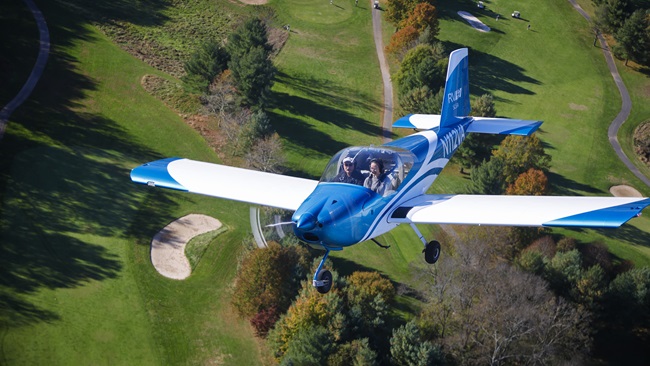Down year, bright future?
Manufacturing execs weigh in on outlook
Aircraft manufacturers faced challenges no one could have predicted before 2020, but the industry has begun to rebound from supply-chain disruptions, factory shutdowns, and other impacts of the coronavirus pandemic, panelists said at a virtual press conference on the state of the industry.
Industry leaders voiced expectations of a transformative recovery—not to a future that returns to the status quo—but to one electrified by new aircraft technologies, sustainably fueled, and with career opportunities that expand and diversify a high-skills workforce.
GAMA released figures showing aircraft deliveries for the year valued at $22.8 billion, down from $27.8 billion in 2019.
“As expected, in 2020, the COVID-19 pandemic negatively impacted general aviation and stifled the industry’s growth. While we continue to face headwinds globally, all signs point to strong demand for our products and services that are unfortunately being constrained by pandemic induced supply chain limitations and a vast array of disjointed barriers to air travel across national borders,” GAMA President Pete Bunce said in a news release.
The 2,399 airplanes shipped in 2020 marked a 9.7-percent decline from 2019, with $20 billion in total billings, down 14.8 percent.
Piston airplane deliveries (1,312) remained nearly stable from 2019 (1,324). However, turboprops took a 15.6-percent hit with 443 shipments, down from 525, and the 644 business jet deliveries skidded 20.4 percent from 809 in 2019.
A bright spot was seen in the business-jet segment’s performance, however, because the decline was less than the 25-percent dip that had been forecast.
Helicopter shipments were down 17.7 percent, and billings slipped 16.2 percent—a caveat being that Italian manufacturer Leonardo had yet to report year-end figures.
Bunce contrasted the emptiness of the National Press Club during the press conference with the packed-room flavor of the previous year’s event, and he lamented the lack of human contact that normally marks gatherings of the close-knit industry.
“When we were here together a year ago none of us could have predicted that factories would be closed down for up to six weeks, that business aircraft, jets, and turboprops couldn’t be used to conduct business—they either couldn’t get across national borders or simply there wasn’t business to conduct,” he said, adding that the energy sector’s troubles dealt a similar blow to rotorcraft operations.
But aviation quickly began to “crawl our way back,” he went on, noting that companies that faced essentially a closed-down second quarter made tough decisions from shutdowns to pay cuts and layoffs and other “extraordinary actions to get this industry back running.”
Despite challenges, the year held some reasons for optimism. GAMA added members “across the spectrum of products” the association represents. Aircraft with electric propulsion are on a path toward certification, Bunce said, holding the promise of a period of technological innovation as exciting as the dawn of the jet age must have been.
With the Lockheed Martin supersonic X–59 aircraft in development, and states like Kansas on board for collaboration, the time will come when public response can be gauged to overflights at speeds of Mach 1 or greater that are noiseless or “not above ambient noise,” he noted.
Panel discussion focused on several visions of the future of GA and business aviation.
Tony Lefebvre, CEO of Signature Flight Support and chairman of GAMA's Environment Committee, noted the support FBOs have provided for distribution of personal protective equipment during the pandemic—and now, vaccine movement. FBOs are serving customers new to GA who are “now part of the family and will continue to fly private in the future.” He demurred on discussing ongoing takeover activity in the FBO segment focused on his company and reportedly on a major competitor, Atlantic Aviation.
Roei Ganzarski, CEO of MagniX, maker of electric motors for aircraft, and executive chairman of sustainable aircraft pioneer Eviation, said the pandemic may be shifting public preferences toward GA aircraft and flights from smaller airports, allowing passengers to avoid “large TSA lines and a lot of people.”
“Maybe they want to have a smaller environmental impact when they fly,” he said.
Electric aircraft are aviation’s future, he added, “because we as an industry can’t keep creating emissions when we fly. It’s just not acceptable anymore and we have to stop that.”
David Paddock, president of Jet Aviation and GAMA’s immediate past chairman, attended the conference remotely from Switzerland, noting the growing acceptance of sustainable aviation fuel and his company’s efforts to promote its availability at FBOs in Geneva and Zurich. He said sustainability practices were “commonplace” in Europe.
Embraer Executive Jets CEO Michael Amalfitano, the panel moderator, turned the topical spotlight on the importance to the industry of showcasing diverse and highly skilled aviation workforce opportunities.
“It’s more than pilots, it’s more than mechanics, and technicians. It’s engineers, it’s accountants, it’s specialists, programmers, public relations, management,” he said, inviting feedback from panelists.
Paddock concurred, touting the industry’s resources for promoting workforce diversity as a core strength of aviation.
Ganzarski also agreed. He noted that “every day in aerospace we defy the laws of gravity,” as companies combine in one product multiple disciplines of engineering, making aerospace “one of the most high-tech, exciting, dynamic, ever-changing industries anyone could dream of working in.”
He urged that the message be taught to the younger generation, emphasizing that tech careers were about more than opportunities at Amazon, Microsoft, or Google—all “great companies,” but “very single product or single-aspect software.”



